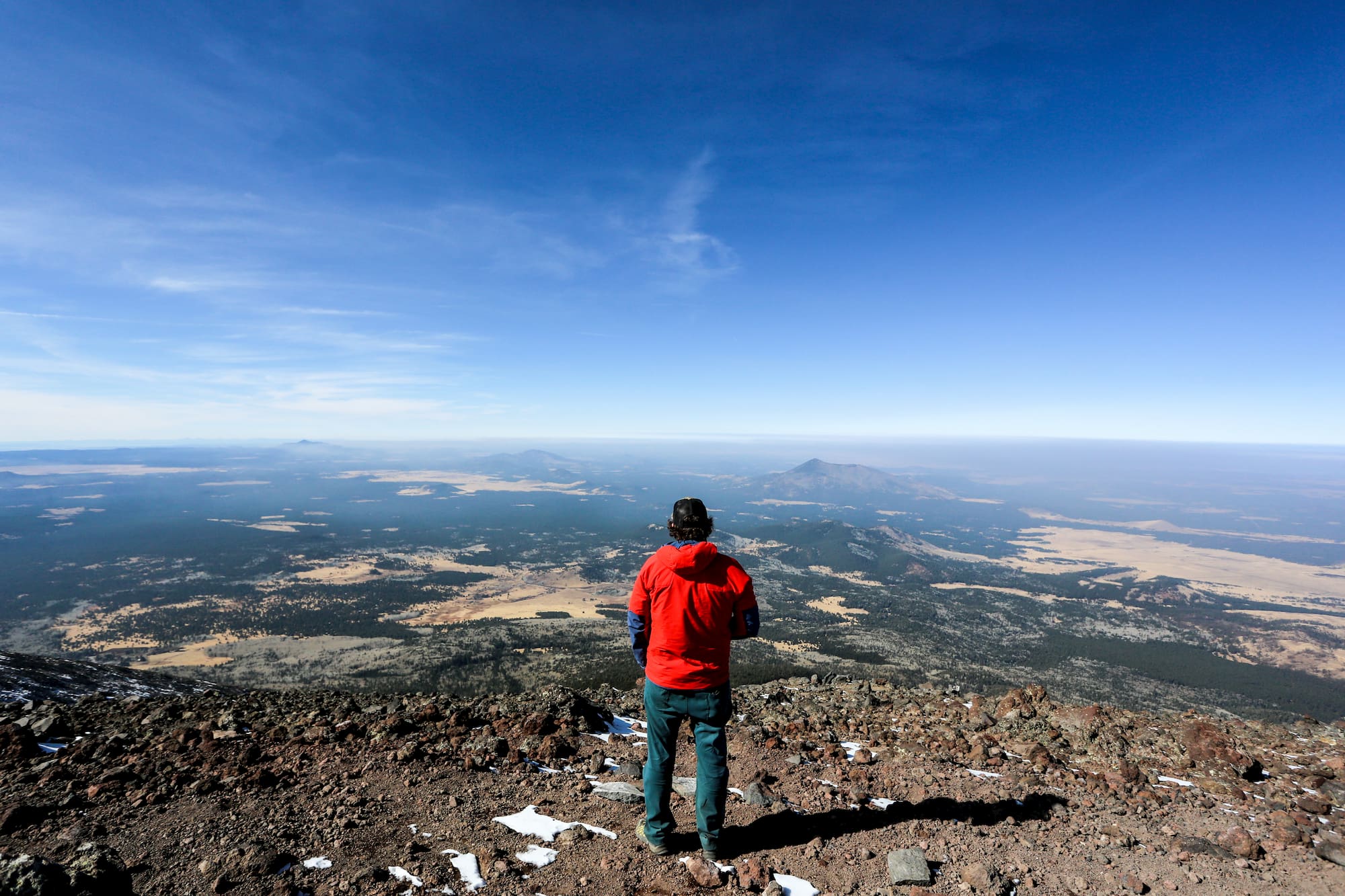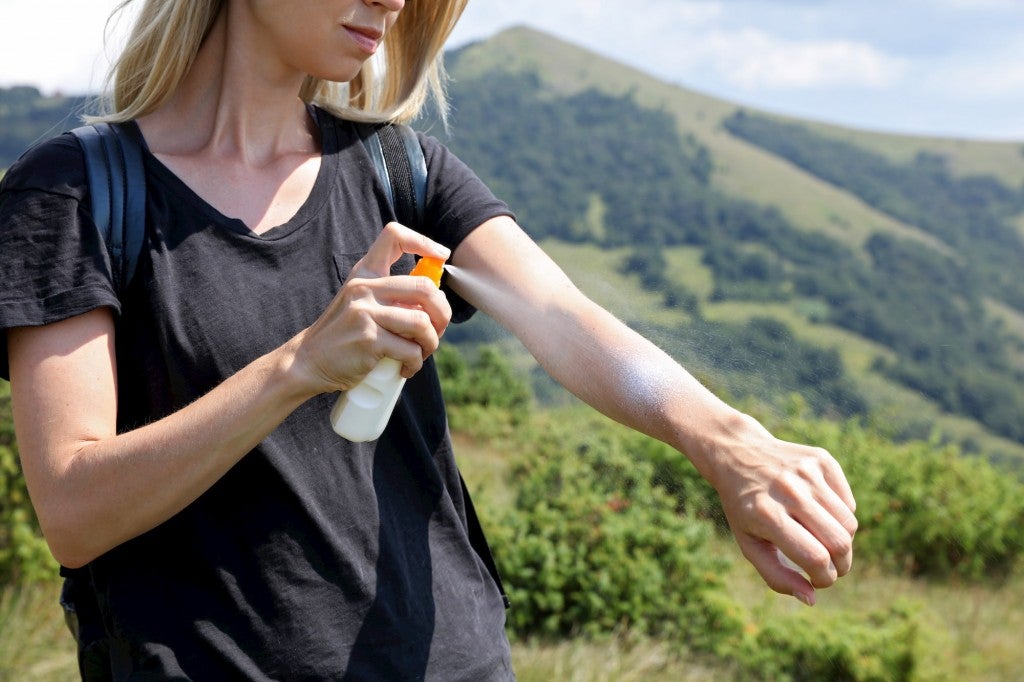This article about Humphreys Peak was brought to you by AfterShokz, the designers of cordless headphones that make it easy and enjoyable to listen to your favorite tunes while bagging peaks.
The highest peak in Arizona, Humphreys Peak, stands 12,635 feet tall and sits just 11 miles north of Flagstaff. The peak’s high elevation and cooler temperature makes it a great place to escape the scorching hot summer months in Arizona. The hike is steep and long, but the outstanding views at the summit make it well worth the difficulty.
Here’s How to Enjoy Hiking Humphrey’s Peak
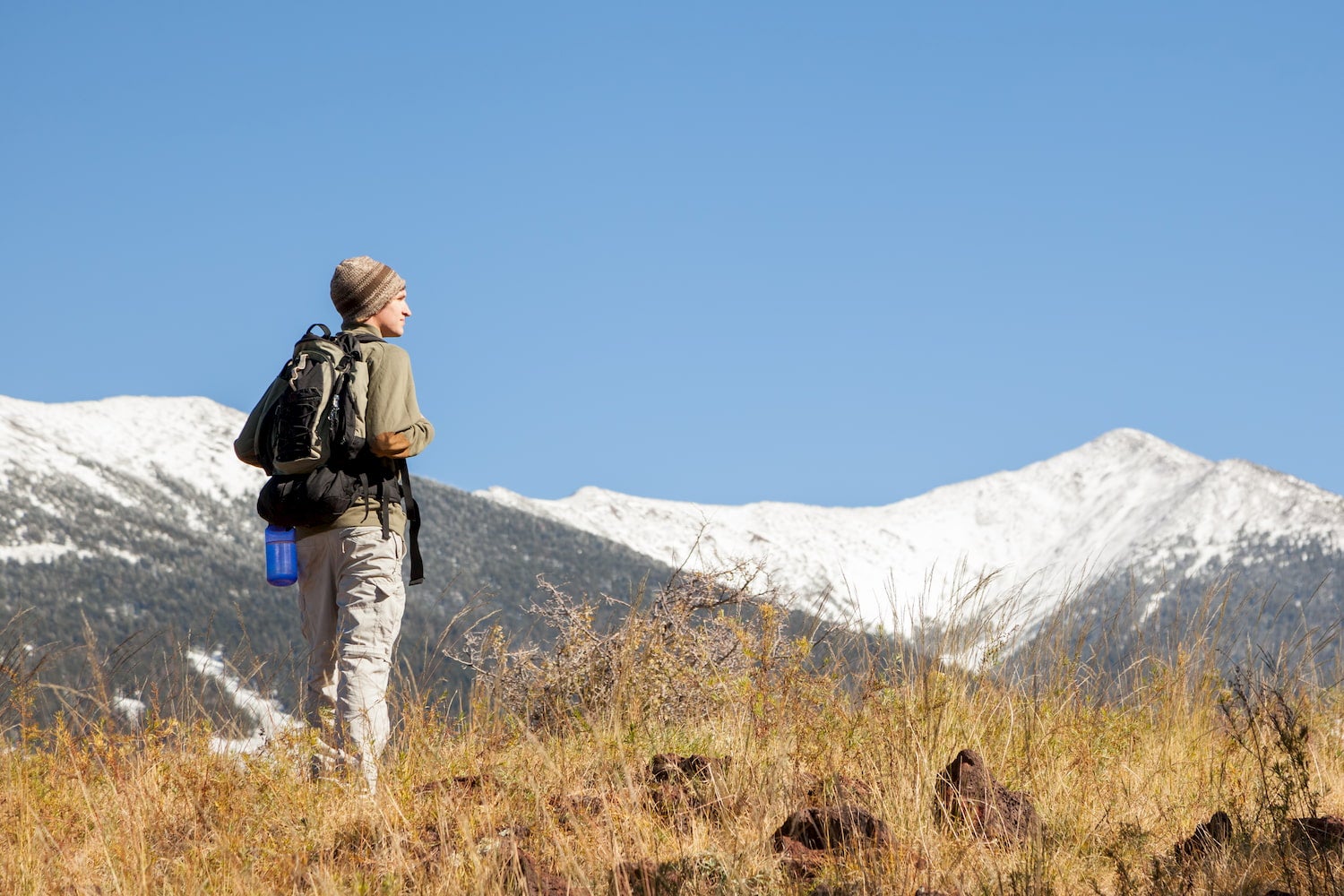
Humphreys Peak is the highest of several summits on the rim of an eroded stratovolcano called San Francisco Mountain. These peaks are sacred to several Native American tribes including the Havasupai, Hopi, Navajo, and Zuni. According to Hopi mythology, the Hopi gods known as Kachinas live on the peaks and clouds around the mountains for half the year inspiring the region’s name, the Kachina Peaks Wilderness.
Hiking Humphreys Peak
The Humphreys Peaks Trail begins from the Arizona Snowbowl parking lot at an elevation of 9,300 feet. It’s a 3,300-foot climb to the summit and close to 10 miles round trip and although not technical, the high altitude and steepness makes it a difficult hike. Expect the hike to take anywhere from 5-8 hours depending on fitness levels and how long you linger at the summit.
From the parking area, the trail starts out relatively easy, passing through a lush mountain meadow before entering an aspen grove and the boundary of the Kachina Peaks Wilderness. A series of endless switchbacks steadily climbs the west-facing slope of the mountain and the trail is well-marked. Eventually, the trees begin to thin and the views open up as you approach the saddle between Humphreys Peak and Agassiz Peak at about 11,800 feet. This is a great spot to rest before pushing the rest of the way to the summit.
From the saddle, the trail is exposed and fully above treeline so you’ll only want to continue if the weather is clear. Up until this point, the trail is easy to follow, but at the saddle, the trail becomes less clear. The trail roughly follows the main ridgeline and two false summits makes the end of the hike a bit of a mental challenge. Eventually, you’ll top out at a small sign marking the summit and can soak in the views extending in all directions. On a clear day, the rim of the Grand Canyon can be seen from the summit.
Tips for Hiking Humphreys Peak
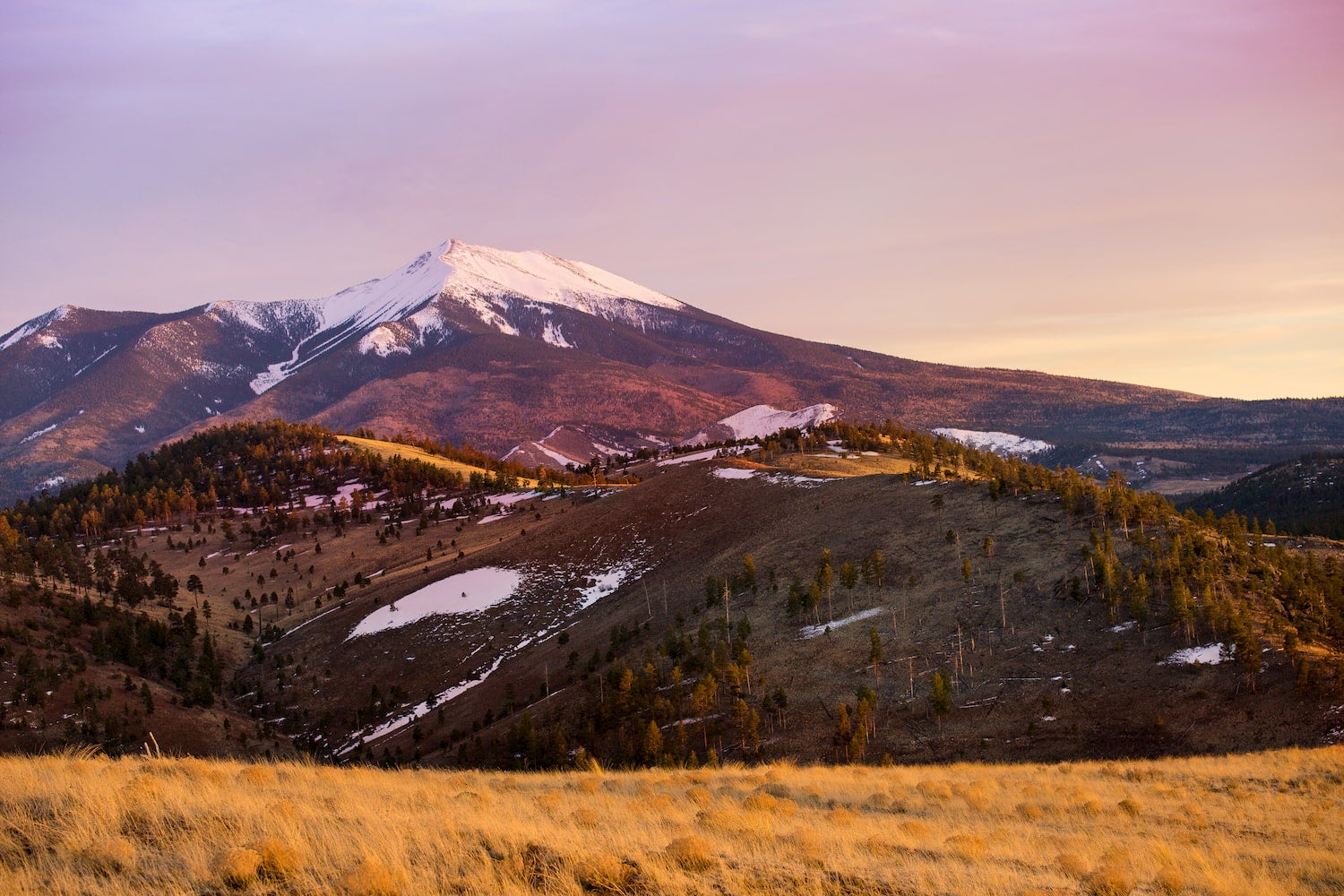
- Watch the weather carefully and only attempt the summit under clear skies.
- Expect strong winds and cold temperatures at the peak so pack additional layers and a waterproof jacket.
- There are no water sources along the trail, so bring along plenty of water.
- Stay well-hydrated to prevent altitude sickness.
- Dogs are allowed on the trail, but must be kept on leash.
Nearby Camping
Experiencing altitude sickness is possible on Humphreys Peak so it’s highly recommended to stay a night near Flagstaff before attempting the summit. This gives your body a chance to adjust to the higher altitude ensuring a more pleasant hiking experience. This is especially important if you’re coming from Phoenix, which sits at barely 1,000 feet above sea level.
Luckily, there are several Flagstaff camping options located near the Humphreys Peak Trail. KOA Flagstaff is one of the closest options to town and offers authentic teepees and rustic cabins to rent if you didn’t pack the tent. Cave Springs Campground is one of the more scenic options with shaded campsites located right along the banks of Oak Creek. Cave Springs is one of the most popular Flagstaff camping options so arrive early in the day to secure a spot.
Lockett Meadow is another popular option and offers scenic views of the San Francisco Peaks. It is especially lovely when the aspens are changing in fall. From Lockett Meadow, Humphreys Peak can be reached via the Weatherford Trail, an alternative to the classic trail mentioned in this post.
Best Time to Hike Humphreys Peak
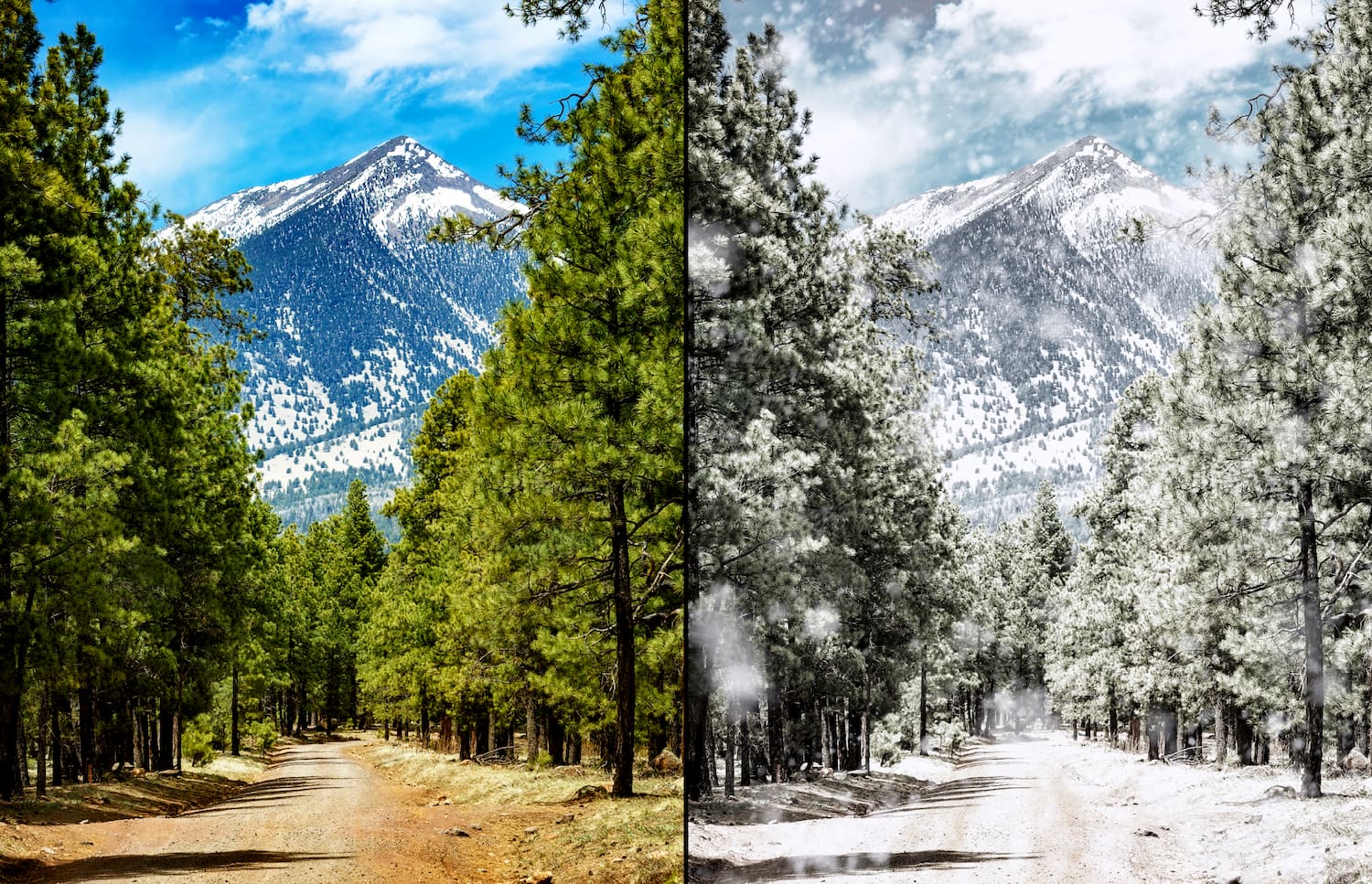
Though Humphreys Peak can be hiked anytime of year, late spring through early fall is the best time to go. During the summer monsoon season, roughly July through mid-September, lightening poses serious risk, so plan on being well below treeline by noon when monsoons are active.
Humphreys Peak Trail trail passes through a plethora of aspen groves and is one of the best places in Arizona to see fall colors. Leaves typically peak between the end of September and mid-October depending on elevation and weather conditions throughout the year.
A permit is required to hike Humpreys in winter, and crampons are necessary to reach the summit. Following winter storms there may be increased avalanche risk on the trail, so always check conditions with the Kachina Peaks Avalanche Center before heading out into the backcountry in winter. It is not uncommon to have snow on the peak well into spring.
Getting to Humphreys Peak
Humphreys Peak Trail begins at the Arizona Snowbowl ski resort, about 14 miles north of Flagstaff. To get there, head north on Humphreys Street from downtown Flagstaff and turn left onto Highway 180. Continue on Highway 180 until you reach the junction with Snowbowl Drive; you’ll find several signs for Snowbowl making it hard to miss. Park in the Arizona Snowbowl lot and look for signs pointing to the Humphreys Peak Trailhead from the parking area.
This guide to Humphrey’s Peak was brought to you by AfterShokz
AfterShokz makes wireless headphones with a mic built in and ready for you to enjoy
The Dyrt is the only camping app with all of the public and private campgrounds, RV parks, and free camping locations in the United States. Download now for iOS and Android.Popular Articles:
Articles on The Dyrt Magazine may contain links to affiliate websites. The Dyrt receives an affiliate commission for any purchases made by using such links at no additional cost to you the consumer.

